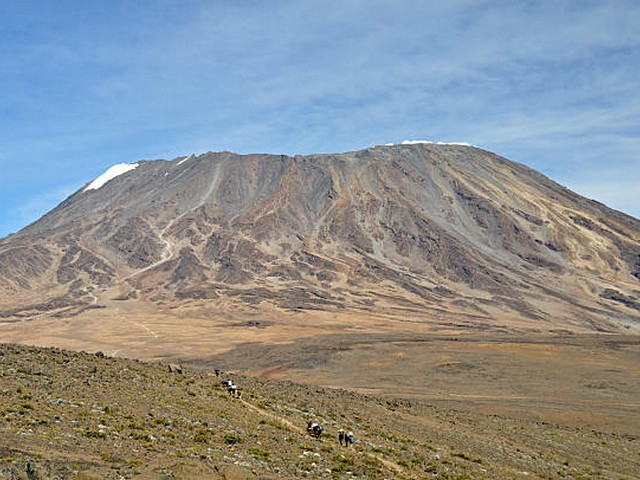Embrace the Summit: Your Ultimate Guide to a Kilimanjaro Trekking Adventure for Beginners
Introduction: Why Choose Kilimanjaro?
Imagine standing on the roof of Africa, surrounded by clouds and the golden glow of the sunrise, with the world stretching out beneath your feet. This is not just an adventure; it’s a transformation. Mount Kilimanjaro, the highest peak in Africa, offers not only breathtaking views but also an accessible challenge for beginners eager to dip their toes into the world of high-altitude trekking. At the Kilimanjaro Centre for Trekking and Ecotourism (KCTE), we specialize in turning your high-altitude dreams into reality, ensuring a safe, memorable, and exhilarating experience. Why wait? Your Kilimanjaro trekking adventure starts here!
H2: Understanding Kilimanjaro: The Basics for Beginners
The Routes to Choose From
Kilimanjaro is unique, offering various routes that cater to different levels of experience and fitness. For beginners, the Marangu and Machame routes are often recommended. Marangu, known as the "Coca-Cola" route, is the only path with hut accommodations and tends to be more comfortable for first-timers. The Machame route, or the "Whiskey" route, is slightly more challenging but rewards trekkers with stunning scenery and a higher success rate due to better acclimatization opportunities.
Best Time to Climb
Timing is crucial for a successful summit. The best months to embark on your Kilimanjaro trekking adventure are during the dry seasons: January to March and June to October. These periods offer the clearest skies and safest trekking conditions.
H2: Preparing for Your Trek: Tips and Training
Physical Preparation
Kilimanjaro is a non-technical climb, but it does require a good level of fitness. Begin your training at least six months in advance, focusing on cardiovascular exercises, strength training, and long-distance walks, preferably on hilly terrain. Remember, the key to conquering Kilimanjaro is endurance.
Mental Preparation
The mental challenge can be as demanding as the physical. Prepare yourself mentally by setting realistic goals, maintaining a positive mindset, and being ready to face the inevitable ups and downs during the trek.
What to Pack
Packing the right gear is essential for your comfort and success. Essentials include thermal layers, a good quality sleeping bag, waterproof clothing, a sturdy pair of hiking boots, and a comfortable backpack. Don’t forget the sun protection and hydration packs!
H2: Life on the Mountain: What to Expect During Your Trek
Daily Routine
Your days on Kilimanjaro begin early, often before sunrise. After a hearty breakfast, you’ll spend several hours trekking at a "pole-pole" (slowly, slowly) pace. Frequent breaks will help you acclimatize, and you’ll enjoy lunches on the trail before reaching your next campsite in the afternoon. Evenings are for rest, dinner, and preparation for the next day’s journey.
Acclimatization and Altitude Sickness
Understanding how to manage altitude sickness is crucial. Symptoms can include headaches, nausea, and dizziness. Our guides at KCTE are trained to help you acclimatize properly and handle any symptoms of altitude sickness, ensuring your safety and comfort.
H2: Why Book With Kilimanjaro Centre for Trekking and Ecotourism (KCTE)?
Expert Guides and Porters
At KCTE, our guides are certified and have years of experience leading treks up Kilimanjaro. Their expertise and local knowledge are invaluable, not only for your safety but also for enriching your trekking experience. Our porters, meanwhile, take care of the heavy lifting, allowing you to focus on the hike and enjoy the stunning vistas.
Safety and Eco-Friendliness
Safety is our top priority. We provide detailed briefings and check-ups throughout the trek. Additionally, KCTE is committed to responsible ecotourism practices, ensuring that we preserve the beauty and integrity of Mount Kilimanjaro for future generations.
Tailored Experiences
We understand that each trekker has unique needs and preferences. That’s why we offer customized itineraries and flexible scheduling. Whether you’re looking for a private trek or joining a group, we tailor the journey to suit your needs.
H2: After the Summit: Extending Your Adventure
Reaching the summit of Kilimanjaro is a monumental achievement, but why stop there? Tanzania is rich with natural beauty and wildlife. Consider a safari in the Serengeti or a relaxing beach holiday in Zanzibar as a perfect complement to your trekking adventure.
Summary and Call-To-Action
Climbing Mount Kilimanjaro is more than just a trek; it is an unforgettable adventure that tests your limits and rewards you with unparalleled views and personal triumphs. At Kilimanjaro Centre for Trekking and Ecotourism (KCTE), we are dedicated to providing you with a safe, enjoyable, and insightful Kilimanjaro trekking adventure.
Why not take the first step on your journey to the summit? Contact us today to book your Kilimanjaro adventure and make memories that will last a lifetime.
FAQ
What is the success rate for beginners climbing Kilimanjaro?
Our success rate for beginners is exceptionally high, typically around 90%, thanks to our expert guides and well-planned acclimatization processes.
How long does it take to climb Kilimanjaro?
The trek can take anywhere from 5 to 8 days, depending on the route and your pace of acclimatization.
Do I need special insurance for climbing Kilimanjaro?
Yes, we recommend that all trekkers have travel insurance that covers high altitude trekking up to 6,000 meters.
Is there an age limit for trekking Kilimanjaro?
There is no official upper age limit for climbing Kilimanjaro. However, trekkers should be in good health and consult with a doctor before planning their trek. The minimum age is 10 years old.
Can I trek Kilimanjaro alone?
For safety and logistical reasons, you cannot trek Kilimanjaro alone. You must be accompanied by a licensed guide, which KCTE provides for all our treks.
Embrace the challenge and experience the majesty of Kilimanjaro with us at KCTE. Let’s make your dream of reaching the summit a reality!




